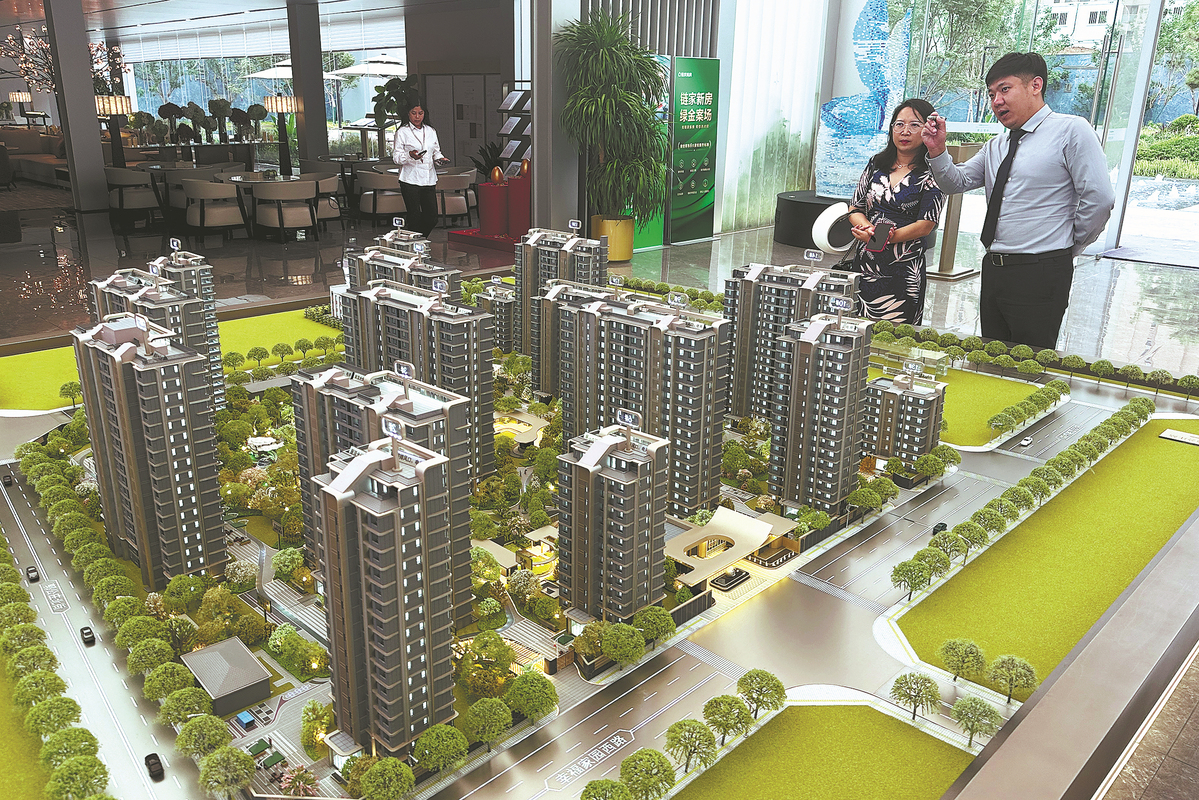Residential property market showing signs of stabilization


An evident improvement in home transactions in first-tier Chinese cities suggests that the residential property market is stabilizing in major cities, paving the way for a bottoming out of the overall housing market in line with government policies, industry experts said.
"As home prices are gradually advancing despite a downward curve, the first half (of the year) may possibly present the best time for homebuyers to make a decision, as an upward trend may appear with market activities continuing to improve," said Yan Yuejin, deputy head of the Shanghai-based E-House China R&D Institute.
While the property market performance of smaller Chinese cities has been relatively flat, new home transactions in the nation's four benchmark cities — Beijing, Shanghai, and Guangdong province's Guangzhou and Shenzhen — reported an up to 95 percent surge month-on-month and an 18 percent increase year-on-year, in March.
Specifically, commercial housing transactions in Beijing and Shanghai both doubled in terms of area from a month ago, according to data collected by market information provider Wind Info.
In Shenzhen, new home spaces traded across the city increased 30.56 percent year-on-year in March, outperforming the four first-tier cities' average of 18.4 percent, and the average 1.34 percent increase seen among 30 key cities, the data from Wind Info showed.
Driven by first-tier cities, new home transactions in the key 30 cities rose 0.89 percent year-on-year in the first quarter, marking a second consecutive quarter of increase in the price gauge, according to Li Yujia, a researcher on residential policy in Guangdong province.
"Such enhanced performance is attributed to multiple factors, including guidance from the annual Central Economic Work Conference in December and the national two sessions in March, as well as various supportive measures launched at the local and central government levels, which helped the home market to continue its recovery momentum in the first quarter," said Li.
"For the first time, the Government Work Report included stabilizing the property market into its content, and stressed that efforts will continue to be made to stabilize the property market, which indicate that more measures will be implemented in accordance with the spirit of the two sessions," said Cao Jingjing, general manager of the index research department at the China Index Academy.
Cao said the speedy implementation of various measures, along with an increase in the supply of high-quality housing, will drive first-tier and core second-tier cities to take the lead in stabilizing the housing market in the second quarter.
According to data from various sources, there has been an apparent recovery in the housing market of the biggest cities.
In terms of home transaction prices, new homes in the country's 100 major cities registered an accumulated growth of 0.52 percent in the first quarter, with that of the first-tier and second-tier cities rising 1.14 percent and 0.37 percent, respectively, against a decline of 0.10 percent in third- and fourth-tier cities, according to data from the China Index Academy.
Shanghai's property market continued its stable performance from January to March, with supply and demand remaining active for both land as well as new home transactions, said Cheng Yu, executive deputy general manager of the Shanghai corporation division of the China Index Academy.
"A total of 1.24 million square meters of commercial housing, or 10,096 apartment units, were traded between Jan 1 and March 28 in the East China cosmopolis, showing resilient supply and demand for new homes," said Cheng.
"In the secondary market, transaction activities maintained a high level amid an overall price drop of 1.51 percent in the first quarter. Particularly in the 20 key cities, there were 342,000 units of used homes traded, a year-on-year growth of 29 percent," said Cao.
As many as 19,234 units of pre-owned apartments changed hands in March across Beijing, an increase of about 62 percent month-on-month and 34.7 percent higher compared with the same period last year, according to the Beijing Municipal Commission of Housing and Urban-Rural Development.
The sharp increase is also a reflection and continuation of the market warming up after Chinese New Year, Leng added.
wang_ying@chinadaily.com.cn




































